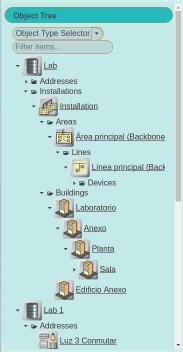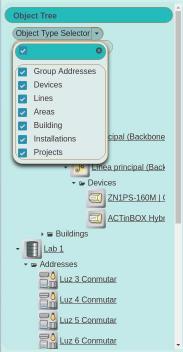Domorela's Blog: Operation Level Features: Logical & Physical Views
Operation Level users in Domorela are allowed to explore the whole topology of the smart building facilities managed by a Domorela unit. It's possible to navigate through the different imported projects to know about logical and physical topologies.
The logical topology views are those related to Areas, with their respective lines and devices, and Group Addresses with their respective Datapoints (Communication Objects), defined in each of the projects imported into Domorela's configuration, while the physical topology views are those related to Building Locations and devices contained in each location.
Operation Level users may access any Group Address present in Domorela's configuration through the option in the left side Views Menu. In this view is possible to filter the shown addresses, listed as a left side menu, and click on them to show the Datapoints (Comm. Objs.) related to the selected address.

As you can see above, "Luz 1 conmutar" is a switched light that has two Communication Objects (Datapoints) assigned: [O1] ON/OFF is the actuator for this Address and [O1] Status is the status indicator. Current value is off and actuator control is shown only for the actuator Datapoint. People with knowledge of KNX protocol can infer that the Datapoint Type (DPT) for his Group Address is 1.001 (1 bit on/off).
In the same way, all Devices present in the configuration are displayed in the Device View as a side menu in order to allow operators to check all the Datapoints (Comm. Objs.) configured in any device, with their current value and assigned Group Address. But this view is accessible only through the Dock Menu.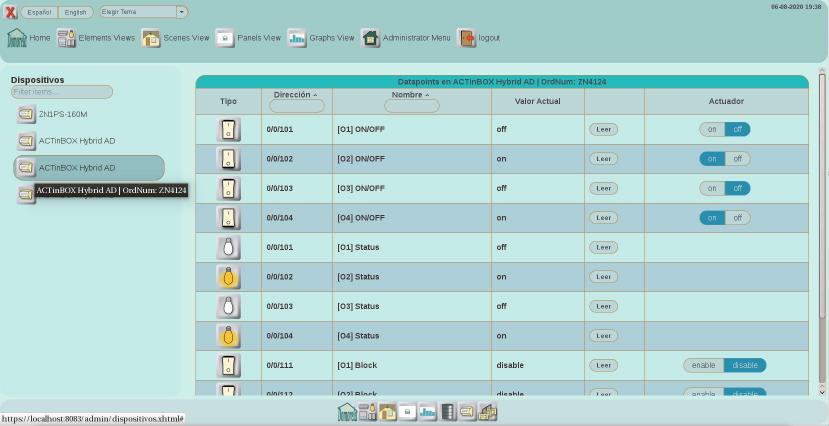
There is also possible to inspect Project and Installation objects in their respective views. These Views, as the previous ones, are designed to show all the child objects grouped in tables.
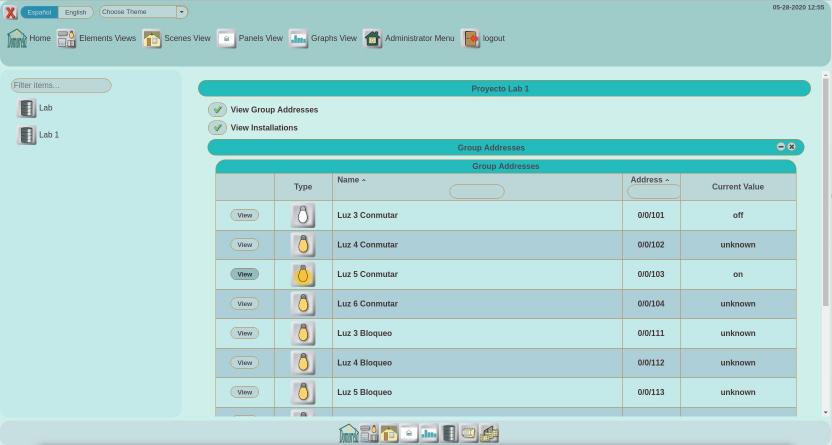
Project View includes a table with all the Group Addresses (see above), showing their current values and allowing to open a dialog showing another table with all Datapoints present in any Address (see below), and a table with all the Installations in the Project that allows to navigate through all the Areas and Buildings in the Project.
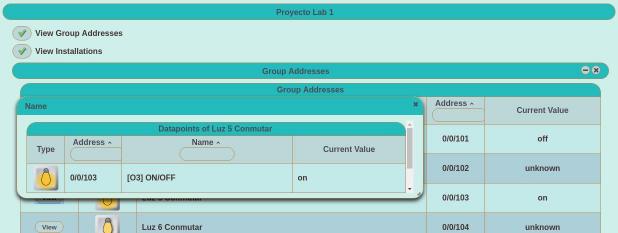
While Installation View is designed as a direct access to all the Installations present in the configuration in the same way as Group Addresses, allowing to navigate through the child objects of any Installation as in the Project View.
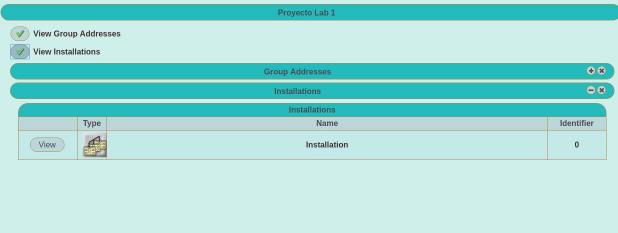
Finally, there is possible to navigate through the whole configuration of Domorela in order to access any element in the configuration of Domorela as an object of a single Object Tree shown in the left side of the layout. This tree includes a branch for each Project present in the configuration. Each Project includes a leaf node for all the Group Addresses and another one for all the Installations present in the Project. Each Installation includes a leaf node for all the Areas and another one for all the Building Locations.
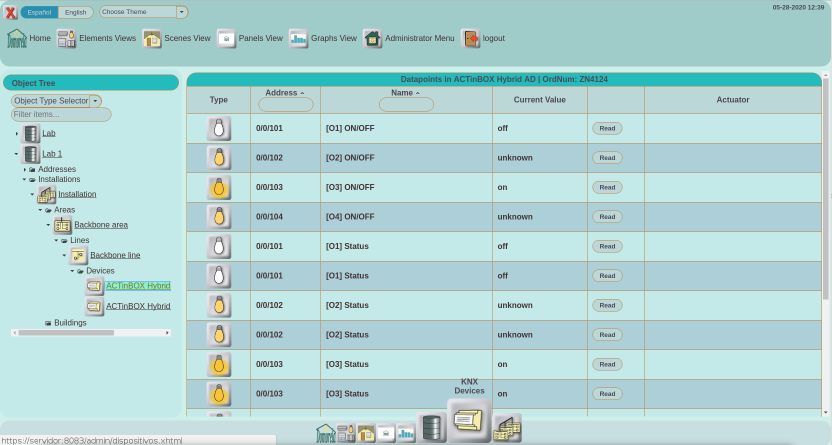
As you can see below, it's possible to filter the type of elements shown in the Object Tree through a multiple selection box, and also to filter the items shown by name. Thus, you can, for instance, select only Group Addresses in the selection box then filter by name typing on the filter input field. Note that unselecting a type of object to be filtered out, led to the filtering of all his children. So, if you unselect Areas then no Areas and no Lines will be shown and, if you unselect Buildings, then no physical topology will be shown at all.
